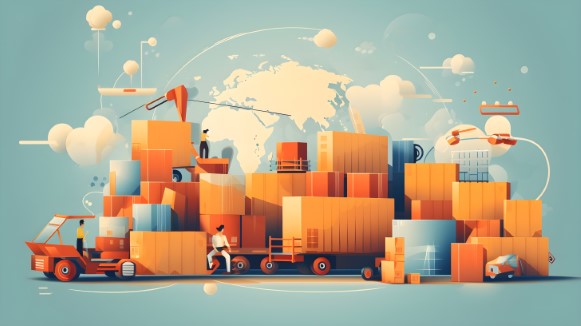Over the last few years, the consumer behaviour has been shifting to a more demanding and more selective relationship with brands. Today, shoppers juggle between all distribution channels : the online channel, which only increases with the current Covid19 period and the offline one. They also define new sharp requirements: traceability, origin of products, local and regional production systems … As the omnichannel fluidifies the path to purchase, the search for innovative logistics solutions (forecasting, stock management, sales tracking algorithm …) is one of the keys to decrypt the new codes ruling the consumer market.
For the locavore, it is local or nothing!
Organic, local, healthier…new consumer values have emerged. The global organic food market has increased five-fold in 15 years. In 2017, it reached nearly 92.8 billion euros in and has exceeded 100 billion euros in 2018. Excesses of today’s consumer society lead to the exploration of alternatives to mass distribution. Consumers are favouring short circuits by eating products coming from less than 160 km from his plate. In the United States, home of this “locavore” movement, restaurants on 5th Avenue offer “100-mile” menus. As well as Google’s headquarters restaurant called “Café 150” because everything served in is produced within less than 150 miles.
This quest for local facilitates the emergence of farmers, cooperative groups or farmers markets, whose number has exploded in the United States. Jostled by this growing success of direct sales, industrial and agribusiness brands are working to develop their own local and regional production systems. However, the mass distribution framework is extremely outlined and timed. Therefore, it is imperative to provide adapted logistics responses. In the case of short circuits, the pooling of transport resources is essential. The principle: consolidate the small volumes of different producers. It reduces transport costs and simplifies the delivery process to mass retailers warehouses or shops.
The omnichannel is the new standard!
Mobile apps, mass distribution, ephemeral retail outlets… Sometimes all is combined because retailers have to reach the shopper by any means. The border between online and offline falls, even though stores are still hype. In fact, 81% of Gen Z prefers to shop in stores. This omnichannel trend, however, goes hand in hand with the personalisation of the customer experience and the digitalisation of the physical store (phygital). The rise of the phygital perfectly illustrates the undergoing “retail revolution”.
Two examples are the emergence of promotional offers based on geolocation and the full product customisation thanks to 3D printing. Colours, patterns, heels … Creating a unique pair of shoes in less than an hour is possible! It means significant challenges for retailers and logisticians who have to adapt their models permanently. In everyday life and regardless of the origin of the flows, logistics must respond to demand as quickly as possible. It’s simple, no delay, no out of stock, no failure tolerated all along the value chain. And for the 3PL, the challenges are real and numerous. To have stocks in adequacy with the expected sales, to ensure the personalisation of the product or the order, to guarantee the 100% transparency, to deliver the different channels in an optimal and reliable way and to adapt in real time…
However, with the intensification of logistics flows, major cities and logistics companies need to coordinate their actions and rethink their approach to logistics. Learn more about the future of the urban supply chain by downloading our White Paper.



